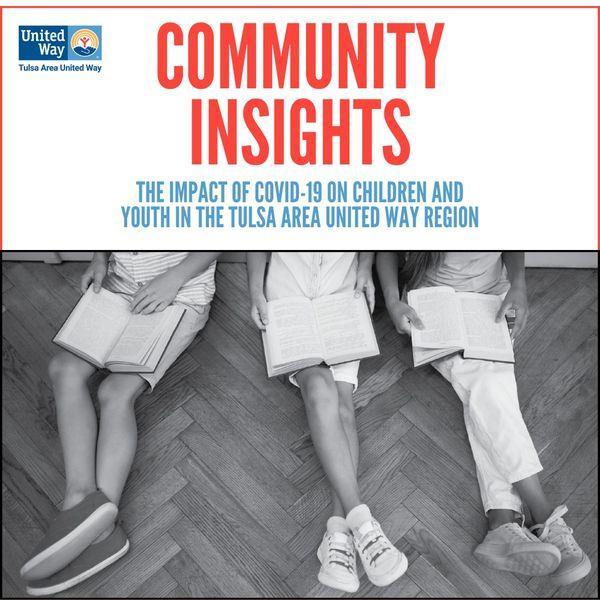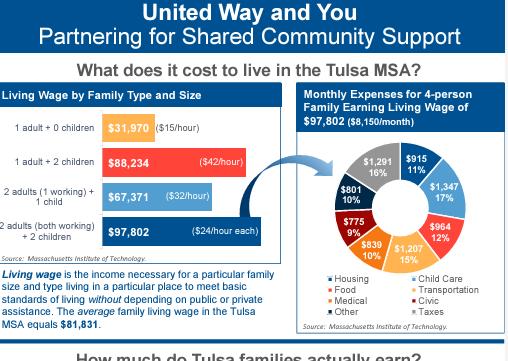
State of the Area 2024
An Overview of Tulsa Area Trends



 MELANIE POULTER RESEARCH AND DATA DIRECTOR
MELANIE POULTER RESEARCH AND DATA DIRECTOR






 MELANIE POULTER RESEARCH AND DATA DIRECTOR
MELANIE POULTER RESEARCH AND DATA DIRECTOR

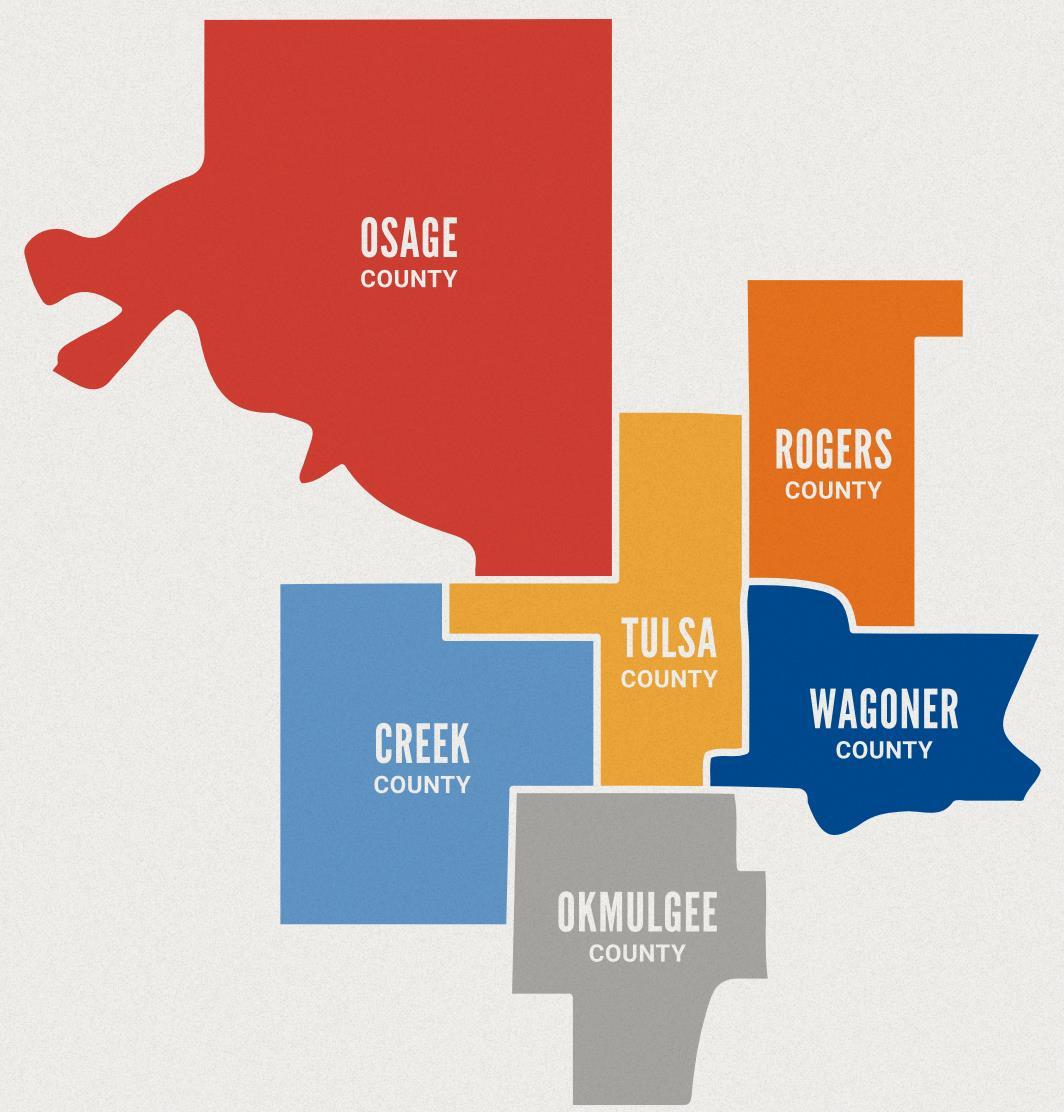



Source: Oklahoma Department of Commerce, “2012 Demographic State of the State Report: Oklahoma State and County Population Projections through 2075”; U.S. Census Bureau, 2022 Population Estimates.

Source: US Census Bureau, 2000 Census, 2010 Census, 2022 Population Estimates; Steven Manson, Jonathan Schroeder, David Van Riper, Tracy Kugler, and Steven Ruggles. IPUMS National Historical Geographic Information System: Version 16.0 [dataset]. Minneapolis, MN: IPUMS. 2021. http://doi.org/10.18128/D050.V16.0

Source: U.S. Census Bureau, 2010 Census, 2022 Population Estimates.



Living Wage
Median Family Income
• The minimum income required for individuals or families to meet basic standards of living based on local expenditures without public or private assistance.
• Average family income representing the “middle” – half of families earn more, half earn less.
Minimum Wage
Poverty/FPL
(Federal Poverty Level)
• The lowest salary an employer can legally pay a worker; varies by state.
• A statistical marker for measuring population living below a specified income level.
• Based on 1950’s distribution of expenses with food accounting for 1/3 of budget.
200% of FPL
• An income measure equal to 2x the poverty level.
300% of FPL
• An income measure equal to 3x the poverty level.

How much do Tulsa area families ACTUALLY earn?ACTUALLY
$80,332
Source: US Census Bureau, 2022 American Community Survey.

What does it cost to live in the Tulsa area in 2023?
Living Wage by Household Type and Size
1 adult + 0 children
1 adult + 2 children
$31,970
($15/hr)
2 adults (1 working) + 1 child
$88,234
2 adults (both working) + 2 children
$67,371
$97,802
Source: Massachusetts Institute of Technology, Department of Urban Studies and Planning, Amy Glasmeier, "Living Wage Calculator" 2023 Update (accessed 4/13/23).
($32/hour)
($42/hour)
($24/hour each)

What are expenses for a family earning Living Wage in the Tulsa area?
Source: Massachusetts Institute of Technology, Department of Urban Studies and Planning, Amy Glasmeier, "Living Wage Calculator" 2023 Update.

Source: US Census Bureau, 2021 American Community Survey; Massachusetts Institute of Technology, Department of Urban Studies and Planning, Amy Glasmeier, "Living Wage Calculator" 2023 Update; Federal Register, “Annual Update of the HHS Poverty Guidelines,” 01/19/2023.

Source: US Census Bureau, 2021 American Community Survey; Massachusetts Institute of Technology, Department of Urban Studies and Planning, Amy Glasmeier, "Living Wage Calculator" 2023 Update; Federal Register, “Annual Update of the HHS Poverty Guidelines,” 01/19/2023.

Source: US Census Bureau, 2021 American Community Survey; Massachusetts Institute of Technology, Department of Urban Studies and Planning, Amy Glasmeier, "Living Wage Calculator" 2023 Update; Federal Register, “Annual Update of the HHS Poverty Guidelines,” 01/19/2023.

$30/hour = $62,000
Source: US Census Bureau, 2021 American Community Survey; Massachusetts Institute of Technology, Department of Urban Studies and Planning, Amy Glasmeier, "Living Wage Calculator" 2023 Update; Federal Register, “Annual Update of the HHS Poverty Guidelines,” 01/19/2023.

How do compare to wage levels?
Source: US Census Bureau, 2021 American Community Survey; Massachusetts Institute of Technology, Department of Urban Studies and Planning, Amy Glasmeier, "Living Wage Calculator" 2023 Update; Federal Register, “Annual Update of the HHS Poverty Guidelines,” 01/19/2023.

What share of Tulsa area residents struggle financially?
Source: US Census Bureau, 2022 American Community Survey.

How do TAUW Partner Nonprofits help with Financial Stability?












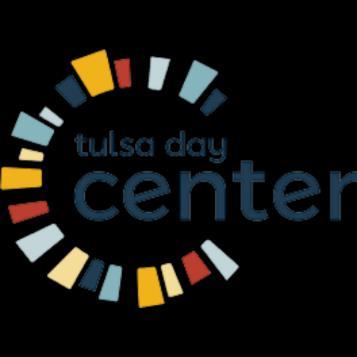















Source: US Census Bureau, 2022 American Community Survey.

Source: US Census Bureau, 2022 American Community Survey.



Source: Oklahoma State Department of Education, Data Matrix, OSTP Assessments, Redacted Data, 2018-19, 2020-21, 2022-23 school years.


44% …of TPS students are chronically absent
500 fewer students... attend school on Friday or Monday than on Tuesday
• Early warning indicator for falling behind academically
• Symptom of deeper challenges for student often related to economic, transportation, health, or safety concerns
Source: Tulsa Public Schools.
250 fewer students... attend school for every 10 degrees the temperature drops.
750 fewer students... attend
school for every inch that it rains.









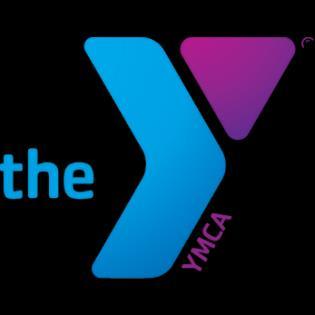

















Social, Emotional and Cognitive Impairment
Disrupted Neurodevelopment
Adverse Childhood Experiences
Source: The Adverse Childhood Experiences Study website: www.acestudy.org.

Percent of adults reporting childhood experiences
Source: Oklahoma State Department of Health, Behavioral Risk Factor Surveillance System 2020 to 2022.









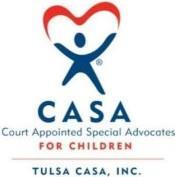

























MelaniePoulter– DataandResearchDirector mpoulter@tauw.org
TAUW Data-Research Link

